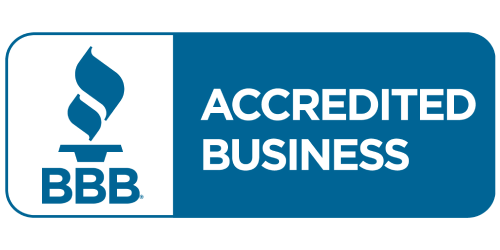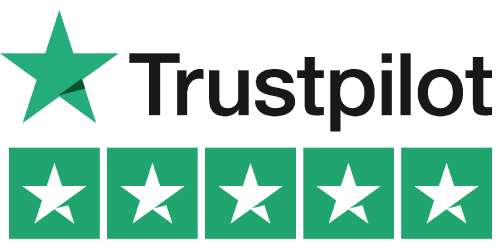Someone’s negligence took your loved one from you. Now you face overwhelming grief while dealing with funeral costs, lost income, mounting bills, and a legal battle that will take years to resolve. Insurance companies and defendants employ teams of lawyers to deny responsibility while your family struggles to survive financially. You need justice for your loss, but you also need money to keep your home, feed your children, and cover basic expenses while pursuing a wrongful death lawsuit. Wrongful death lawsuit loans from 123 Lawsuit Loans provide immediate cash so you can pursue fair compensation without financial desperation forcing you to accept inadequate settlements. This is non-recourse funding – you pay nothing if your case doesn’t recover money.
Wrongful death settlements average $500,000 to $1 million nationwide according to legal data analyzing nearly 1,000 cases from 2019-2024. The mean settlement reaches $973,054 while the median of $294,728 better represents typical outcomes for most families. Individual cases range from $100,000 to over $10 million depending on the deceased’s age and income, family circumstances, negligence severity, and available insurance coverage.
Wrongful death lawsuits typically take 18-48 months to resolve through settlement or trial. Medical malpractice cases average 2-4 years. Product liability claims extend 3-5 years. During this time, families face immediate financial crises from funeral expenses averaging $8,000-$10,000, lost household income, children’s expenses, and basic living costs while defendants delay, deny, and fight legitimate claims.
We understand the impossible situation grieving families face. You need time to mourn while also fighting powerful defendants and insurance companies with unlimited legal resources. Financial pressure forces many families to accept settlements that don’t reflect the true value of their loss. That’s why we offer non-recourse pre-settlement funding with 24-hour approval. No credit checks. No monthly payments. Just immediate financial relief so you can pursue justice without desperation.
The Devastating Financial Impact of Wrongful Death – Immediate Crisis and Long-Term Loss
Wrongful death creates instant financial catastrophe for families who lose primary earners, caregivers, and household contributors while facing substantial expenses and extended litigation timelines.
Immediate Funeral and Burial Expenses
Funeral and burial costs average $8,000-$10,000 for basic services according to the National Funeral Directors Association. Traditional funerals with viewing and burial exceed $9,000. Even cremation with memorial services costs $6,000-$7,000.
Families facing sudden death rarely have savings set aside for funeral expenses. Credit cards, family loans, and GoFundMe campaigns become necessary to provide proper farewells.
Burial plots cost $1,000-$4,000 in most areas. Cemetery fees, headstones, and grave markers add $2,000-$5,000 to funeral expenses.
Religious or cultural funeral requirements may increase costs substantially. Multiple-day wakes, specific burial practices, and traditional ceremonies create additional financial burdens.
Lost Income and Household Financial Collapse
Primary earners’ deaths eliminate 50-100% of household income instantly. Families lose $50,000-$200,000+ annually when breadwinners die, creating immediate survival crises.
Single-parent households face total income loss when the sole earner dies. Children lose not just a parent but their entire financial support system.
Dual-income families struggle when one earner dies. Mortgages, car payments, and living expenses designed for two incomes become impossible on single salaries.
Self-employed individuals and business owners leave families with lost business income, business debts, and no succession plans. Family businesses collapse when key operators die.
Children’s Expenses and Educational Impact
Children’s basic needs continue despite family income loss. Food, clothing, school expenses, and activities create ongoing financial pressure.
College savings get depleted for survival expenses. Education funds meant for tuition cover rent and groceries during litigation.
Childcare costs increase dramatically when surviving parents must work more hours. Daycare and after-school care add $200-$500 weekly to expenses.
Children’s psychological trauma may require counseling and therapy. Mental health treatment costs $100-$300 per session without insurance coverage.
Medical Bills from Final Illness or Injury
Medical expenses before death often exceed $50,000-$500,000. Emergency treatment, hospitalization, surgery, and intensive care create enormous bills.
Life support costs $2,000-$10,000 daily. Families face hundreds of thousands in medical debt from failed attempts to save loved ones.
Ambulance transport, emergency room fees, and trauma team activation add $5,000-$25,000 to immediate medical expenses.
Families often exhaust insurance coverage during final treatment. Out-of-pocket maximums, co-pays, and uncovered services create substantial debt.
Housing Instability and Foreclosure Risk
Mortgage payments of $1,500-$4,000 monthly become impossible without primary earner income. Families face foreclosure within 3-6 months of missed payments.
Renters face eviction when income loss prevents rent payment. Losing housing adds moving costs, storage fees, and family displacement trauma.
Property taxes, insurance, and maintenance costs continue despite income loss. Homeownership expenses overwhelm grieving families.
Second mortgages and home equity loans go into default. Foreclosure destroys family wealth and credit ratings.
Loss of Benefits and Insurance Coverage
Employer-sponsored health insurance terminates with employee death. Surviving family members lose coverage for ongoing medical needs.
COBRA coverage costs $600-$2,000 monthly for family plans. Grieving families can’t afford continued health insurance.
Pension benefits, retirement accounts, and workplace benefits disappear with employee death. Future financial security evaporates.
Life insurance proceeds often prove inadequate. Policies of $50,000-$100,000 don’t replace years of lost income and household contributions.
Types of Wrongful Death Cases We Fund
We provide funding for all types of wrongful death lawsuits where negligence, recklessness, or intentional acts caused fatal injuries creating family financial hardship during litigation.
Medical Malpractice Wrongful Death Cases
Surgical Errors and Anesthesia Deaths
Surgical Mistakes including wrong-site surgery, organ damage, and post-operative infections cause preventable deaths. Surgeon negligence creates hospital and medical provider liability.
Anesthesia Errors involving overdoses, monitoring failures, and allergic reactions cause brain damage and death. Anesthesiologists face malpractice claims for fatal mistakes.
Post-Surgical Complications from inadequate monitoring, infection control failures, and discharge planning errors. Hospitals liable when preventable complications cause death.
Emergency Surgery Deaths from delayed treatment, misdiagnosis, or surgical errors during life-saving procedures. Emergency room negligence creates wrongful death liability.
Misdiagnosis and Delayed Treatment
Cancer Misdiagnosis allowing treatable cancers to become terminal. Radiologists, pathologists, and physicians face liability for missed diagnoses causing death.
Heart Attack and Stroke Delays when emergency room doctors miss critical symptoms. Time-sensitive conditions require immediate treatment to prevent death.
Infection Diagnosis Failures allowing sepsis and bacterial infections to become fatal. Delayed antibiotic treatment causes preventable deaths.
Pediatric Misdiagnosis killing children when doctors dismiss symptoms or fail to recognize serious conditions. Children’s deaths create substantial wrongful death damages.
Medication Errors and Pharmacy Mistakes
Prescription Errors including wrong medications, incorrect dosages, and dangerous drug interactions. Pharmacists and doctors face liability for fatal medication mistakes.
Hospital Drug Administration errors by nurses administering wrong medications or dosages. Nursing negligence causes preventable patient deaths.
Chemotherapy Overdoses killing cancer patients through calculation errors or administration mistakes. Oncology errors create medical malpractice liability.
Motor Vehicle Accident Wrongful Death
Drunk Driving Fatal Accidents
Intoxicated Driver Deaths from alcohol or drug-impaired drivers causing fatal crashes. Drunk drivers face criminal charges and civil wrongful death liability.
Bar and Restaurant Liability under dram shop laws when establishments over-serve intoxicated patrons who cause fatal accidents. Bars face substantial damages for serving drunk drivers.
Social Host Liability when party hosts provide alcohol to guests who cause fatal drunk driving crashes. Homeowners insurance may cover social host liability.
Distracted Driving Fatal Crashes
Texting While Driving Deaths from drivers using phones causing fatal accidents. Cell phone distraction creates clear negligence liability.
Commercial Driver Distraction when truck drivers, bus operators, or delivery drivers cause deaths while distracted. Employers face vicarious liability.
Technology Distraction from GPS use, infotainment systems, and other in-vehicle technology causing fatal crashes. Manufacturers may face product liability.
Commercial Trucking Fatal Accidents
Truck Driver Negligence including fatigue, speeding, and reckless driving causing catastrophic crashes. Trucking companies face substantial wrongful death liability.
Maintenance Failures when brake defects, tire blowouts, and mechanical problems cause fatal truck accidents. Fleet operators liable for inadequate maintenance.
Cargo Loading Errors causing rollover accidents and load shifts leading to fatal crashes. Shipping companies and loaders face liability.
Workplace Fatal Accidents
Construction Site Deaths
Falls from Height when workers die falling from scaffolding, roofs, or ladders. General contractors and property owners face wrongful death liability.
Trench Collapses burying workers alive causing suffocation deaths. OSHA violations and inadequate shoring create employer liability.
Crane Accidents killing workers when cranes collapse or loads drop. Equipment operators and construction companies face substantial damages.
Electrocution Deaths from power line contact and electrical system failures. Utilities and contractors liable for electrical safety violations.
Industrial and Manufacturing Deaths
Machine Accidents including workers crushed, caught, or killed by equipment. Employers and equipment manufacturers face wrongful death claims.
Chemical Exposure Deaths from toxic substance exposure causing fatal poisoning or organ failure. Industrial facilities liable for inadequate safety measures.
Explosion and Fire Deaths from industrial accidents, gas leaks, and safety violations. Companies face wrongful death liability for preventable explosions.
Premises Liability Wrongful Death
Slip and Fall Fatal Accidents
Nursing Home Falls killing elderly residents through inadequate supervision and fall prevention. Nursing homes face wrongful death and elder abuse claims.
Store and Business Falls causing fatal head injuries to customers. Property owners liable for dangerous conditions.
Apartment Complex Falls from inadequate maintenance, poor lighting, and dangerous conditions. Landlords face premises liability for tenant deaths.
Swimming Pool Drowning Deaths
Child Drowning Cases when inadequate fencing, supervision, or safety measures allow children to drown. Pool owners face substantial wrongful death damages.
Hotel and Resort Drownings from inadequate lifeguards, dangerous conditions, and safety violations. Hospitality businesses liable for guest deaths.
Private Pool Deaths at residential properties with inadequate safety measures. Homeowners insurance covers wrongful death liability.
Product Liability Wrongful Death
Defective Product Deaths
Vehicle Defects including airbag failures, rollover propensity, and brake defects causing fatal crashes. Auto manufacturers face product liability.
Medical Device Failures when implants, surgical devices, or diagnostic equipment cause patient deaths. Device manufacturers liable for design and manufacturing defects.
Consumer Product Deaths from defective appliances, tools, and household products. Manufacturers face strict liability for deadly products.
Pharmaceutical Wrongful Death
Dangerous Drug Side Effects causing fatal reactions, organ failure, or other deadly complications. Pharmaceutical companies face product liability.
Contaminated Medications causing infections and fatal illnesses. Drug manufacturers liable for contamination deaths.
Inadequate Warnings when prescription drugs cause deaths due to undisclosed risks. Failure to warn creates manufacturer liability.
Wrongful Death Settlement Values and Damage Calculations
Settlement amounts vary dramatically based on deceased’s age and income, family circumstances, negligence severity, and available insurance coverage providing compensation sources.
Economic Damages in Wrongful Death Cases
Lost Income and Earning Capacity
Future Earnings Calculation based on deceased’s age, occupation, education, and career trajectory. Economists project lifetime earnings from death through retirement age.
Young Professional Deaths create highest economic damages. 30-year-old earners with 35+ working years ahead lose millions in lifetime income.
Executive and High-Earner Deaths produce substantial economic damages. Six-figure salaries multiplied over decades create multi-million dollar losses.
Self-Employed Deaths require business valuation and income projection. Successful business owners’ deaths create enormous economic damages.
Lost Benefits and Retirement
Pension and Retirement Benefits lost when employees die before retirement. Present value calculations determine benefit losses.
Health Insurance Value for families losing employer-sponsored coverage. Insurance costs over lifetime create substantial damages.
Stock Options and Equity lost when employees die before vesting. Technology and corporate employees lose significant equity compensation.
Household Services Value
Stay-at-Home Parent Contributions calculated based on childcare, housekeeping, and household management services. Economists value unpaid household labor at $50,000-$100,000+ annually.
Eldercare Services when deceased provided parent care. Lost caregiving services create substantial economic damages.
Home Maintenance and Repairs performed by deceased. Handyman and maintenance services add economic value.
Non-Economic Damages
Loss of Companionship
Spousal Loss compensates surviving spouses for lost marriage relationship. Lifetime companionship losses create substantial non-economic damages.
Parent-Child Loss when children lose parents or parents lose children. Parent-child relationships valued highly in wrongful death cases.
Family Relationship Value for siblings, extended family, and household members. Court recognizes diverse family structures.
Pain and Suffering
Pre-Death Suffering when deceased experienced pain before dying. Conscious pain and suffering between injury and death adds damages.
Mental Anguish of knowing death is imminent. Awareness of impending death increases suffering damages.
Family Grief compensated in some jurisdictions. Survivors’ emotional suffering recognized as compensable damage.
Settlement Range Examples
Medical Malpractice Deaths: $500,000-$10,000,000
Surgical Error Deaths settle for $1-5 million typically. Clear negligence and preventable deaths create substantial liability.
Misdiagnosis Deaths range $750,000-$3 million. Cancer misdiagnosis cases often exceed $2 million.
Medication Error Deaths settle $500,000-$2 million depending on victim age and circumstances.
Vehicle Accident Deaths: $300,000-$8,000,000
Drunk Driving Deaths settle $500,000-$3 million. Punitive damages and multiple insurance policies increase values.
Truck Accident Deaths range $1-8 million. Commercial insurance and catastrophic crashes create high settlements.
Pedestrian and Bicycle Deaths settle $400,000-$2 million depending on victim circumstances and liability evidence.
Workplace Deaths: $400,000-$5,000,000
Construction Deaths settle $750,000-$4 million. Third-party liability beyond workers compensation increases damages.
Industrial Accidents range $500,000-$3 million. Employer negligence and safety violations create substantial liability.
Transportation Deaths settle $600,000-$2 million depending on commercial insurance and liability circumstances.
Notable Settlement Examples
$15 Million Medical Malpractice – 42-year-old father died from surgical error leaving wife and three children.
$12.5 Million Truck Accident – Family of five killed by fatigued truck driver violating hours of service regulations.
$8.9 Million Product Liability – Defective medical device caused death of 55-year-old executive.
$6.2 Million Nursing Home – Elder abuse and neglect caused preventable death of 78-year-old resident.
Why Defendants Fight Wrongful Death Claims
Insurance companies and defendants employ aggressive strategies to deny liability and minimize wrongful death settlements despite clear negligence causing family tragedies.
Insurance Company Defense Tactics
Major insurers including State Farm, Allstate, and Nationwide maintain specialized wrongful death units staffing experienced defense attorneys who minimize claim values.
Liability Denial claims deceased contributed to own death through comparative negligence, assumption of risk, or pre-existing conditions.
Causation Challenges argue alternative death causes including medical conditions, suicide, or unrelated factors rather than defendant negligence.
Damage Minimization employs economists and experts who calculate minimal economic losses and dispute non-economic damages.
Delay Strategies extend litigation through discovery abuse, continuances, and procedural motions exhausting family resources.
Pre-Existing Condition Arguments
Defense medical experts claim underlying health conditions caused death rather than defendant negligence.
Medical History Review searches for any prior illness, injury, or condition to blame for death.
Alternative Causation theories attribute death to natural causes despite clear negligent acts.
Life Expectancy Arguments claim deceased would have died soon anyway due to health conditions.
Economic Damage Disputes
Earning Capacity Challenges argue deceased had limited earning potential despite clear income evidence.
Retirement Age Disputes claim earlier retirement reducing future income calculations.
Household Service Minimization disputes value of stay-at-home parents and household contributions.
Benefit Valuation Arguments challenge pension, healthcare, and retirement benefit calculations.
Settlement Pressure Tactics
Lowball Initial Offers of 10-30% of case value pressure desperate families into quick settlements.
Financial Investigation discovers family financial problems to increase settlement pressure.
Litigation Cost Pressure forces families to pay expert fees, depositions, and trial costs to exhaust resources.
Statute of Limitations Pressure waits until deadlines approach before making serious offers.
The Application Process for Wrongful Death Lawsuit Funding
Getting pre-settlement funding requires evaluation of case strength, damages calculation, insurance coverage, and settlement potential during extended litigation timelines.
Step 1: Case Information and Family Circumstances
Complete application providing information about deceased, accident circumstances, defendants, legal representation, and family financial situation.
Describe how death occurred, who was responsible, what evidence exists proving liability, and current litigation status.
Provide family information including dependents, financial losses, and immediate funding needs during case pendency.
Include attorney contact information for case file review and settlement potential assessment.
Step 2: Liability and Negligence Evaluation
We coordinate with your wrongful death attorney to review complaint, evidence, liability theories, and defendant defenses.
Our team evaluates negligence proof including accident reports, witness statements, expert opinions, and liability documentation.
We assess comparative fault arguments, assumption of risk defenses, and causation challenges affecting case value.
Clear liability evidence and strong negligence proof support higher funding amounts.
Step 3: Damages Assessment and Economic Analysis
We analyze economic damages including lost income projections, benefit calculations, and household service values.
Our reviewers assess non-economic damages including loss of companionship, pain and suffering, and family relationship values.
We evaluate deceased’s age, income, family circumstances, and life expectancy in damages calculations.
Comprehensive damages documentation supports realistic settlement projections and funding amounts.
Step 4: Insurance Coverage Verification
We verify defendant insurance policies, coverage limits, and available compensation sources.
Individual defendants carry $100,000-$1,000,000 liability policies. Commercial entities maintain $1-$10 million coverage.
Medical malpractice insurance provides $1-$5 million coverage per physician. Hospitals carry $5-$25 million policies.
Multiple defendants and insurance policies create additional recovery sources increasing total settlement potential.
Step 5: Settlement Projection
Experienced underwriters consider all factors including damages, liability strength, insurance coverage, and attorney quality.
Final funding amounts reflect realistic settlement expectations based on comparable cases and jurisdiction verdicts.
We provide funding from $5,000 to $500,000 depending on case value and family financial needs.
Benefits of 123 Lawsuit Loans for Wrongful Death Cases
Our specialized expertise in wrongful death litigation and compassionate approach to grieving families makes us the preferred funding source.
Wrongful Death Case Experience Since 2008
We’ve funded hundreds of wrongful death cases including medical malpractice, vehicle accidents, workplace deaths, and product liability claims.
Our team understands damages calculations, settlement patterns, and litigation timelines better than general funding companies.
This specialized knowledge allows us to approve complex cases and provide appropriate funding for grieving families.
Compassionate Service During Difficult Times
We understand families face impossible situations balancing grief with financial survival and legal battles.
Our representatives treat every family with respect, empathy, and understanding during application processes.
We never pressure grieving families or create additional stress during already traumatic circumstances.
Fast Approval for Emergency Situations
Most applications receive decisions within 24-48 hours when complete information is provided.
Emergency situations involving foreclosure, eviction, or utility disconnection may qualify for same-day approval.
We understand families need immediate relief during financial crises following wrongful deaths.
Flexible Funding Based on Case Development
We provide funding from $5,000 to $500,000 depending on settlement potential and family needs.
Initial funding can increase as cases develop through discovery, expert testimony, and settlement negotiations.
We work with attorneys to determine appropriate amounts meeting family needs while maintaining reasonable repayment expectations.
Using Wrongful Death Lawsuit Funding Strategically
Smart use of pre-settlement funding allows families to pursue maximum compensation without financial desperation affecting settlement decisions.
Avoid Premature Settlement Pressure
Financial desperation forces many families to accept inadequate settlements covering immediate bills but not lifetime losses.
When basic needs are met through funding, families can reject lowball offers and pursue fair compensation.
This financial stability often results in settlements 200-400% higher than initial defendant proposals.
Complete Case Development
Strong wrongful death cases require expensive expert testimony including economists, medical experts, and life care planners.
Funding allows attorneys to fully develop cases rather than settling prematurely due to client financial pressure.
Complete case preparation typically increases settlement values substantially beyond funding costs.
Maintain Housing and Family Stability
Lawsuit funding prevents foreclosure, eviction, and family displacement during litigation.
Children maintain schools, friends, and stability during already traumatic periods.
Family unity and housing security improve overall wellbeing during difficult times.
Focus on Grief and Healing
Financial stability allows families to focus on emotional healing rather than constant survival worries.
Counseling, therapy, and support services become affordable when basic needs are covered.
Children receive necessary psychological support during grief processes.
Qualifying for Wrongful Death Lawsuit Funding
To qualify, you must meet basic criteria demonstrating viable wrongful death case with settlement potential.
Active Wrongful Death Lawsuit
You must have filed wrongful death lawsuit with experienced attorney representation.
Your lawyer should specialize in wrongful death litigation with track record of substantial settlements.
Cases must involve clear negligence and provable damages supporting settlement expectations.
Clear Liability Evidence
Strong negligence proof including accident reports, witness statements, and expert opinions.
Defendants must be identifiable with adequate insurance coverage or assets.
Causation evidence linking defendant conduct directly to death.
Substantial Damages
Economic losses including lost income, benefits, and household services must justify significant settlement.
Non-economic damages including loss of companionship and family suffering recognized in jurisdiction.
Family circumstances supporting substantial damage awards including young children or dependent spouses.
Adequate Insurance Coverage
Defendants must have liability insurance or assets capable of paying settlements.
Multiple defendants with separate insurance policies create stronger funding opportunities.
Commercial defendants typically maintain higher insurance limits than individuals.
Start Your Wrongful Death Lawsuit Funding Application Today
Don’t let financial pressure force your family to accept inadequate settlements. Get funding to pursue justice for your loved one.
Confidential Application Process
Applying is completely confidential with no obligation to accept funding.
Our process won’t affect your case, attorney relationship, or settlement negotiations.
If not approved, you owe nothing. If approved but you decline, you owe nothing.
Work With Your Current Attorney
You don’t need to change lawyers. We work with your current wrongful death attorney.
Many experienced wrongful death attorneys facilitate rapid approvals.
Your attorney reviews all agreements ensuring complete understanding.
Apply Now – Get Relief Tomorrow
Complete our application with information about your case and family situation.
Most applications receive decisions within 24 hours.
Remember, our funding is completely non-recourse. You only repay if you receive settlement money.
Apply today and focus on healing while we help with your financial needs.
Important Legal Disclaimers:
This is not a traditional loan. Wrongful death lawsuit loans are non-recourse funding, meaning you only pay us back if you win or settle your case. Rates and terms vary based on case specifics and expected settlement amounts. Your attorney must be involved and will receive all funding agreements for review.
123 Lawsuit Loans has been serving families since 2008 with an A+ Better Business Bureau rating and 98% customer satisfaction. Pre-settlement funding provides financial assistance during litigation but should not replace professional legal advice.
Individual results vary based on case circumstances, damages, legal representation, and defendant resources. Past settlement amounts do not guarantee similar outcomes. Consult with qualified wrongful death attorneys about your legal rights.





